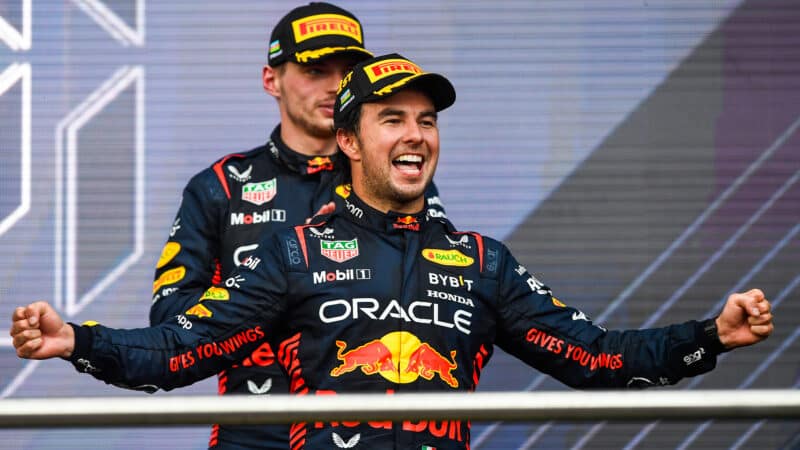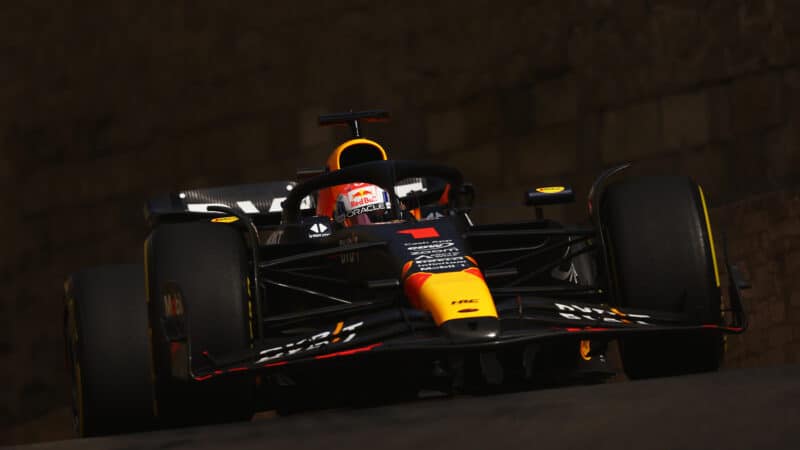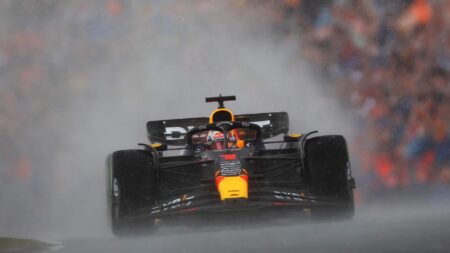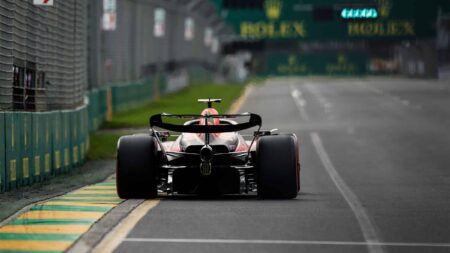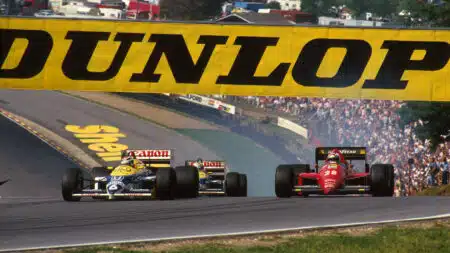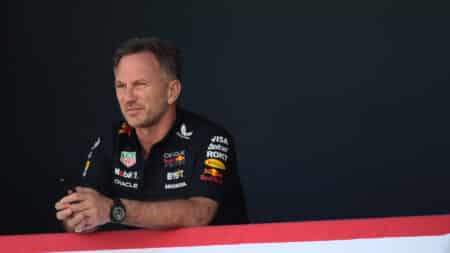Put into that equation a more powerful front tyre and it can be imagined how it will require something of an adjustment. In certain key corners at Baku, that loading up of the outer front was potentially too powerful (thereby overheating the rear tyres). But when he used the tools on his steering wheel (brake bias, differential, engine braking torque map, offset from corner to corner of the brake bias) to tame that, he got mid-corner understeer. The fronts would then get too hot and no longer give him the support needed to help rotate the car. He was in a constant struggle trading off one problem against the other, his engineer suggesting many different combinations of the tools to help him, but with the perfect combination proving elusive.
Ordinarily, this might have been just dismissed as an inherent trait of the car on this track. If he was at the front and pulling away, that’s how it would have seemed. But he wasn’t. He was chasing Perez and not catching. Every time he closed up a little, the tyres would overheat, either front or rear, but mainly rear. Perez has a much simpler driving style; he simply lives with a little bit of understeer on entry then uses his very delicate throttle foot to optimise traction from apex to exit. So confident is he in driving like this he can shave the walls super-close without giving it a thought. It’s a key to his speed on street tracks. But whereas Verstappen is attacking the corner on entry and then trying to tame the consequences on exit, Perez is less aggressive on entry and is then pushing against the rear on exit with his right foot, trying to make up on exit what he’s lost on entry to the slower rotation. Verstappen’s way is invariably faster, but you need his feel and sensitivity to do it. And around Baku Perez’s way was giving the tyres an easier time. The rears were not getting the sudden spike loadings that Verstappen’s were and that was proving crucial.
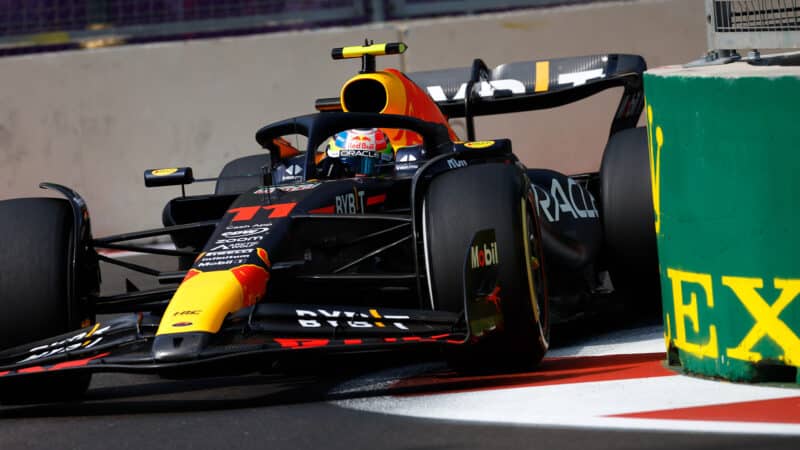
Perez’s confidence on street circuits gave him superior speed in Baku
Getty via Red Bull
This comparison in styles has held true ever since they were paired in ’21 and wasn’t a new thing. All that was new was how the more powerful front Pirelli had changed the set-up code required to fully exploit Verstappen’s style – and this had gone unnoticed in the blizzard of success early-season but in Baku was being exposed for the first time by Perez’s speed relative to his. Yes, Checo had won in Jeddah too but that could be dismissed simply as a result of Verstappen’s qualifying mechanical problem which had left him starting way down the grid. But this was genuine performance and Perez was quicker.
So Verstappen was trying a higher torque map, using the greater engine braking to help rotate the car. But that was losing him time under braking to Perez. So he’d then come back down on that. But as he adapted his braking technique, his engineer Gianpiero Lambiase (aka GP) could see that this might then allow him to go up on the torque map once more. He could use it like this in the three problem corners and have it offset from that in the others, thereby giving a better combination over the lap.
That combination was a positive one, though it involved giving the outer front tyre a rest every now and again as its responsiveness would decrease as it became hotter. Then the rear temperatures would creep up. That window between good initial rotation and good control of the rear tyre slip was proving incredibly narrow, but together Verstappen and Lambiase were refining it through the race. They weren’t going to catch Perez who seemed to have an answer to whatever they threw at him, but they were learning some valuable lessons. Now that he was running a very aggressive entry set up, GP suggested, there was a tool he could use to help with the exit consequences of that. “Display 5, position 9,” he suggested.
